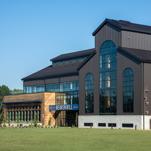Trump Ain’t Original: A Brief History of Anti-Immigrant Hysteria in America
Photo courtesy of Getty
Donald Trump’s supporters praise him “telling it like it is” when it comes to immigration, as if he’s the only one willing to be “tough” on immigrants. In fact, he’s employing one of the oldest tricks in the book. His “build the wall” rhetoric—and the entire wave of anti-immigrant anger gripping much of this country—is just the most recent chapter in a story that dates back to before the Revolution.
Ben Franklin’s Cosmic Case Against Immigrants
Ben Franklin, the godfather of our nation, expressed his desire to make America white again in 1751, well before he embraced the idea of an independent America. In Observations Concerning the Increase of Mankind, Peopling of Countries, etc., he said that German immigrants would put a strain on the colonial economy, calling them “Palatine boors” who “swarm into our settlements” and “will never adopt our language and customs, any more than they can acquire our complexion[.]”
-

-

-

-

-

-

-

-

-

-

-

-

-

-

-

-

-

-

-

-

-

-

-

-

-

-

-

-

-

-

-

-

-

-

-

-

-

-

-

-








































